How to configure java environment variables
How to configure java environment variables: 1. Right-click [Computer], select [Properties], click [Advanced System Settings] to open the environment variable settings; 2. Create a new [JAVA_HOME] variable and edit [Path] ] variable; 3. Create a new [Classpath] variable and edit it.

Specific method:
JAVA_HOME variable setting
First right-click [Computer] to enter [ Properties] and then select [Advanced system settings].
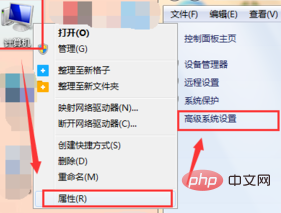
Click [Environment Variables] in [Advanced] to enter the environment variable editing interface.
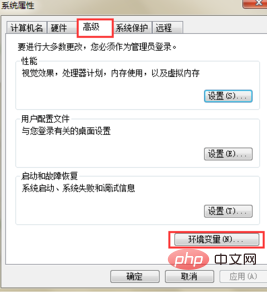
In the [System Variables] below, the JAVA_HOME variable does not exist, then we need to click [New]
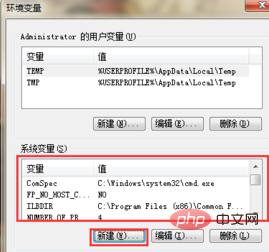
Variable name input: JAVA_HOME
(Free video tutorial sharing: java video tutorial)
The variable value refers to the actual installation path (such as the editor’s path is: C:\Program Files\Java\jdk-9), and finally click OK.
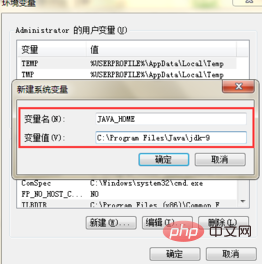
Path variable setting
Also in [System Variables] we can see that the path variable already exists, then we only You need to click [Edit] to enter the editing of the path variable
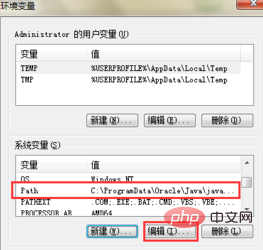
The variable name remains unchanged and the variable value is changed to [%JAVA_HOME%\bin;%JAVA_HOME%\jre\bin; ], and finally click OK.
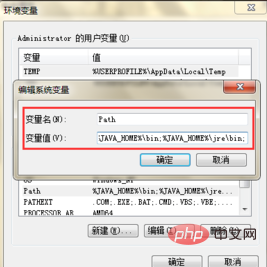
Classpath variable setting
Similarly, there is no Classpath variable in the system variables. Click to enter [New]
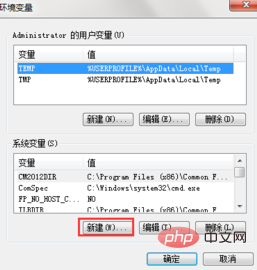
Type the variable name [Classpath]
Type the variable value [.;%JAVA_HOME%\lib\dt.jar;%JAVA_HOME %\lib\tools.jar; ]
Note: Do not miss the symbols in the variable value, and finally click OK.
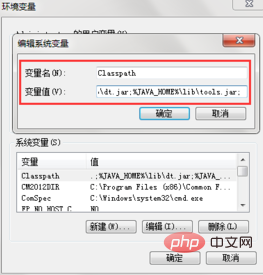
Test whether the environment configuration is successful
After completing the above three variable configurations, don’t forget to click OK step by step.
Similarly, search [cmd] in [Start], then type [java] and [javac], and the message as shown in the figure will appear, indicating that the configuration is successful.

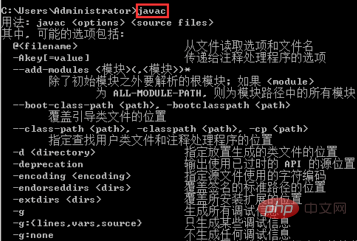
Recommended related articles and tutorials: java introductory tutorial
The above is the detailed content of How to configure java environment variables. For more information, please follow other related articles on the PHP Chinese website!

Hot AI Tools

Undresser.AI Undress
AI-powered app for creating realistic nude photos

AI Clothes Remover
Online AI tool for removing clothes from photos.

Undress AI Tool
Undress images for free

Clothoff.io
AI clothes remover

AI Hentai Generator
Generate AI Hentai for free.

Hot Article

Hot Tools

Notepad++7.3.1
Easy-to-use and free code editor

SublimeText3 Chinese version
Chinese version, very easy to use

Zend Studio 13.0.1
Powerful PHP integrated development environment

Dreamweaver CS6
Visual web development tools

SublimeText3 Mac version
God-level code editing software (SublimeText3)

Hot Topics
 Square Root in Java
Aug 30, 2024 pm 04:26 PM
Square Root in Java
Aug 30, 2024 pm 04:26 PM
Guide to Square Root in Java. Here we discuss how Square Root works in Java with example and its code implementation respectively.
 Perfect Number in Java
Aug 30, 2024 pm 04:28 PM
Perfect Number in Java
Aug 30, 2024 pm 04:28 PM
Guide to Perfect Number in Java. Here we discuss the Definition, How to check Perfect number in Java?, examples with code implementation.
 Random Number Generator in Java
Aug 30, 2024 pm 04:27 PM
Random Number Generator in Java
Aug 30, 2024 pm 04:27 PM
Guide to Random Number Generator in Java. Here we discuss Functions in Java with examples and two different Generators with ther examples.
 Armstrong Number in Java
Aug 30, 2024 pm 04:26 PM
Armstrong Number in Java
Aug 30, 2024 pm 04:26 PM
Guide to the Armstrong Number in Java. Here we discuss an introduction to Armstrong's number in java along with some of the code.
 Weka in Java
Aug 30, 2024 pm 04:28 PM
Weka in Java
Aug 30, 2024 pm 04:28 PM
Guide to Weka in Java. Here we discuss the Introduction, how to use weka java, the type of platform, and advantages with examples.
 Smith Number in Java
Aug 30, 2024 pm 04:28 PM
Smith Number in Java
Aug 30, 2024 pm 04:28 PM
Guide to Smith Number in Java. Here we discuss the Definition, How to check smith number in Java? example with code implementation.
 Java Spring Interview Questions
Aug 30, 2024 pm 04:29 PM
Java Spring Interview Questions
Aug 30, 2024 pm 04:29 PM
In this article, we have kept the most asked Java Spring Interview Questions with their detailed answers. So that you can crack the interview.
 Break or return from Java 8 stream forEach?
Feb 07, 2025 pm 12:09 PM
Break or return from Java 8 stream forEach?
Feb 07, 2025 pm 12:09 PM
Java 8 introduces the Stream API, providing a powerful and expressive way to process data collections. However, a common question when using Stream is: How to break or return from a forEach operation? Traditional loops allow for early interruption or return, but Stream's forEach method does not directly support this method. This article will explain the reasons and explore alternative methods for implementing premature termination in Stream processing systems. Further reading: Java Stream API improvements Understand Stream forEach The forEach method is a terminal operation that performs one operation on each element in the Stream. Its design intention is






